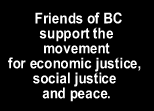
|
|||||||||||||||||||||||
 |

Custom Search
|
 |
| 0.
Number of renters in 0. Number of apartments currently being built to replace the 963 public housing apartments formerly occupied and now demolished at the St. Bernard Housing Development. 0. Amount of data available
to evaluate performance of publicly financed privately run charter
schools in .008. Percentage of the rental homes that were supposed to be repaired and occupied by August 2008 which were actually completed and occupied – a total of 82 finished out of 10,000 projected. 1. Rank of 1. Rank of 4. Number of the 13 City
of New 10. Number of apartments being rehabbed so far to replace the 896 apartments formerly occupied and now demolished at the Lafitte Housing Development. 11. Percent of families who have returned to live in Lower Ninth Ward. 17. Percentage increase in wages in the hotel and food industry since before Katrina. 20-25. Years that experts estimate
it will take to rebuild the City of 25. Percent fewer hospitals
in metro 32. Percent of the city’s neighborhoods that have fewer than half as many households as they did before Katrina. 36. Percent fewer tons
of cargo that move through 38. Percent fewer hospital
beds in 40. Percentage fewer special education students attending publicly funded privately run charter schools than traditional public schools.
41. Number of publicly
funded privately run public charter schools in 43. Percentage of child
care available in 46. Percentage increase
in rents in 56. Percentage fewer inpatient psychiatric beds than before Katrina. 80. Percentage fewer public transportation buses now than pre-Katrina. 81. Percentage of homeowners
in 300. Number of National
Guard troops still in City of 1080. Days National Guard
troops have remained in City of 1250. Number of publicly
financed vouchers for children to attend private schools in 6,982. Number of families still
living in FEMA trailers in metro 8,000. Fewer publicly assisted
rental apartments planned for 10,000. Houses demolished in
12,000. Number of homeless in
14,000. Number of displaced
families in 32,000. Number of children who
have not returned to public school in 39,000. Number of 45,000. Fewer children enrolled
in Medicaid public healthcare in 46,000. Fewer African American
voters in 55,000. Fewer houses receiving mail than before Katrina. 62,000. Fewer people in 71,657. Vacant, ruined, unoccupied
houses in 124,000. Fewer people working
in metropolitan 132,000. Fewer people in 214,000. Fewer people in 453,726. Population of 320 million. The number trees
destroyed in 368 million. Dollar losses
of five major metro 1.9 billion. FEMA dollars
scheduled to be available to metro 2.6 billion. FEMA dollars
scheduled to be available to State of For more information see the Greater New Orleans Community Data Center and Policy Link. BlackCommentator.com
Columnist, Bill Quigley, is a human rights lawyer and law professor
at Loyola University, New Orleans.
He has been an active public interest lawyer since 1977 and has
served as counsel with a wide range of public interest organizations
on issues including Katrina social justice issues, public housing,
voting rights, death penalty, living wage, civil liberties, educational
reform, constitutional rights and civil disobedience. He has litigated
numerous cases with the NAACP Legal Defense and Educational Fund, Inc., the Advancement Project,
and with the ACLU
of Louisiana, for which he served as General Counsel for over
15 years. Bill is one of the lawyers for displaced residents.
Additionally, Bill is the author of the forthcoming book, Storms
Still Raging: Katrina, |
Any BlackCommentator.com article may be re-printed so long as it is re-printed in its entirety and full credit given to the author and www.BlackCommentator.com. If the re-print is on the Internet we additionally request a link back to the original piece on our Website. Your comments are always welcome. eMail re-print notice
If you send us an eMail message we may publish all or part of it, unless you tell us it is not for publication. You may also request that we withhold your name. Thank you very much for your readership. |
| |
| August 28, 2008 Issue 288 |
|
| Executive Editor: Bill Fletcher, Jr. |
| Managing Editor: Nancy Littlefield |
| Publisher: Peter Gamble |
| Est. April 5, 2002 |
Printer Friendly Version
in resizeable plain
text format or pdf
format. |

|
 |
 |
 |
| |
| |





































